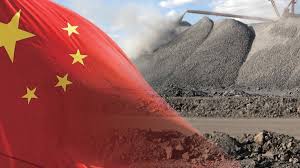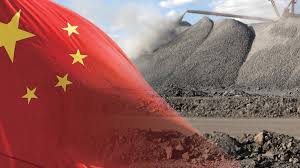
China’s recent resumption of rare earth magnet shipments has done little to reassure global manufacturers and governments that supply shocks are a thing of the past. After imposing export restrictions in April in retaliation for heightened U.S. tariffs on Chinese goods, Beijing has begun issuing new licences—but at a deliberate, uneven pace. Automakers from Detroit to Munich scrambled to keep high-tech factories running, and aerospace, defence and clean‑energy companies remain on edge as licence approvals languish under an opaque bureaucratic process. While the flow of critical materials has technically resumed, a host of structural, strategic and environmental factors continue to hamper the free movement of rare earth elements from China to the rest of the world.
Industry insiders say that licence issuance rates have climbed from roughly 25 percent to about 60 percent of pending applications, but even that uptick masks profound disparities. European firms have fared slightly better than their American counterparts, whose licence requests often involve end users or transit through third countries such as India—cases that are taking longer or being deprioritised altogether. In practice, production lines in Asia, Europe and North America that rely on neodymium and dysprosium magnets are still vulnerable to delays, while purchasers of scandium and terbium worry that backlogs will persist well into the peak manufacturing season.
Analysts warn that without a transparent, predictable licensing framework, companies will struggle to plan for capital investment, workforce deployment and supply‑chain resilience. The uncertainty is so pronounced that senior executives at major auto suppliers describe the current state as a “bare minimum” trickle of critical materials—just enough to stave off dramatic shutdowns, but not enough to restore confidence in supply continuity.
Licensing Bottlenecks and Regulatory Ambiguity
At the heart of the disruption lies China’s non‑automatic export licensing regime, which requires firms to submit extensive documentation and wait weeks or months for approval. Although Beijing announced a political agreement in London in late May to expedite shipments to established U.S. customers, the mechanics of that deal remain unclear. Chinese customs authorities continue to demand proof of previous import history, detailed end‑use declarations and environmental compliance reports—conditions that many foreign companies find burdensome and opaque.
In practical terms, that means a U.S. magnet maker with defence clients has received only five licences out of 180 applications since April. Suppliers report that initial paperwork review can take up to 45 days, followed by an additional 45 days or more before final approval. Even after receiving permission, firms face the risk that local customs offices will delay or deny export release on technical grounds. This painstaking process effectively throttles exports, forcing manufacturers to reroute production schedules or maintain costly safety stocks.
Moreover, observers note that while China has speeded approvals for firms with long‑standing import relationships—often large European and Japanese conglomerates—it has withheld licences from smaller companies and those supplying critical technologies to nations seen as more hostile to Beijing. That selective enforcement underscores the strategic use of export controls as a bargaining chip in broader trade negotiations and geopolitical disputes.
Strategic Leverage and Geopolitical Calculus
Beyond the mechanics of licence issuance, China’s rare earth export controls represent a potent tool of statecraft. With more than 95 percent of global processing capacity for rare earth elements, Beijing wields near‑monopoly power over materials essential to electric vehicles, wind turbines, advanced electronics and defence systems. When U.S. tariffs on Chinese products rose earlier this year, China responded by curbing exports of seven key rare earths and related magnets—a move that delivered a sudden –75 percent drop in global shipments and sent shockwaves through supply chains.
This diplomatic leverage serves multiple objectives. First, it underlines China’s willingness to deploy economic statecraft to counteract foreign tariffs and industrial policy measures. Second, it sends a warning to other nations considering similar unilateral digital service taxes or manufacturing subsidies that Beijing can—and will—retaliate in kind. Finally, by restricting technology transfers and export approvals, China protects its domestic rare earth industry from overcompetition, preserving high‑tech jobs and ensuring resource security.
The decision to grant “bare minimum” licences for European firms, while dragging out U.S. applications, suggests a calibrated approach that balances economic priorities with political messaging. European automakers, whose factories in Germany and France rely heavily on Chinese‑made magnets, have successfully lobbied for expedited approvals. U.S. companies, meanwhile, face a more protracted process amid a wider diplomatic standoff that includes ongoing Section 301 investigations into China’s industrial subsidies and intellectual property practices.
Environmental and Industrial Policy Considerations
Underlying China’s export restrictions are longstanding environmental and resource conservation policies. Rare earth extraction and processing generate significant toxic and radioactive waste, and Beijing has in recent years tightened domestic oversight of mining operations to curb deforestation, water contamination and worker exposure to harmful chemicals. By imposing strict controls on both domestic production and export licensing, China can enforce higher environmental standards at home while using exports as a pressure point abroad.
Since 2016, the Ministry of Commerce has banned the export of rare earth separation and magnet production technologies, compelling foreign partners to apply for licences that scrutinise environmental compliance. Producers argue that this approach forces them to absorb higher domestic costs—even as cheaper, lower‑regulation producers in other countries threaten the competitiveness of Chinese exports. The result is a dual‑edged strategy: China maintains its advantage in refining capabilities while signalling its commitment to sustainable mining practices.
At the same time, the complex web of quotas, non‑automatic licensing and technology export bans deters new entrants from establishing alternative supply chains outside China. Despite significant investment in rare earth mining projects in Australia, the United States and Africa, the lack of downstream processing capacity and technological know‑how entrenches China’s position as the world’s rare earth powerhouse. Governments in Japan, India and the U.S. have unveiled plans to subsidise domestic processing and diversify import sources, but these initiatives will take years to bear fruit.
Industrial Impact and Market Responses
In the automotive sector, manufacturers have responded to uncertainty by redesigning electric motor magnets to reduce reliance on the most restricted elements, increasing recycling efforts, and stockpiling critical inputs. Ford, Volkswagen and Stellantis report stable short‑term inventories but caution that any renewed slowdown in licences could force temporary plant shutdowns or output cuts. Defense contractors, which depend on high‑purity dysprosium‑based alloys, are exploring long‑term alloy substitutions and domestic refining partnerships but acknowledge that progress is incremental.
Commodity traders have lifted rare earth prices by upwards of 20 percent since April, reflecting concerns about persistent bottlenecks. While some investors anticipate that the London‑brokered deal will lead to a broader thaw in U.S.‑China trade tensions, most agree that the absence of procedural clarity means volatility is likely to continue. In the absence of a robust multilateral framework for managing digital service taxes and industrial subsidies, nations remain prone to unilateral measures that cascade into supply‑chain disruptions.
Even as licence approvals accelerate, many industry executives fear that China’s strategic calculus could shift again if the U.S. tightens tariffs or if the domestic political environment in Beijing demands a tougher stance. In that scenario, the risk of renewed export curbs would loom large, compelling companies to further accelerate decoupling efforts, diversify supply sources and invest heavily in recycling and alternative technologies.
As rare earth magnets flow, but not freely, the episode serves as a cautionary tale: in an era of “trade wars” and industrial nationalism, control of critical minerals has emerged as a decisive factor in global economic and security competition. Until transparent, rules‑based mechanisms for allocating licences and resolving disputes are established, the lingering threat of bottlenecks will underscore the vulnerability of even the most sophisticated supply chains.
(Source:www.investing.com)
Industry insiders say that licence issuance rates have climbed from roughly 25 percent to about 60 percent of pending applications, but even that uptick masks profound disparities. European firms have fared slightly better than their American counterparts, whose licence requests often involve end users or transit through third countries such as India—cases that are taking longer or being deprioritised altogether. In practice, production lines in Asia, Europe and North America that rely on neodymium and dysprosium magnets are still vulnerable to delays, while purchasers of scandium and terbium worry that backlogs will persist well into the peak manufacturing season.
Analysts warn that without a transparent, predictable licensing framework, companies will struggle to plan for capital investment, workforce deployment and supply‑chain resilience. The uncertainty is so pronounced that senior executives at major auto suppliers describe the current state as a “bare minimum” trickle of critical materials—just enough to stave off dramatic shutdowns, but not enough to restore confidence in supply continuity.
Licensing Bottlenecks and Regulatory Ambiguity
At the heart of the disruption lies China’s non‑automatic export licensing regime, which requires firms to submit extensive documentation and wait weeks or months for approval. Although Beijing announced a political agreement in London in late May to expedite shipments to established U.S. customers, the mechanics of that deal remain unclear. Chinese customs authorities continue to demand proof of previous import history, detailed end‑use declarations and environmental compliance reports—conditions that many foreign companies find burdensome and opaque.
In practical terms, that means a U.S. magnet maker with defence clients has received only five licences out of 180 applications since April. Suppliers report that initial paperwork review can take up to 45 days, followed by an additional 45 days or more before final approval. Even after receiving permission, firms face the risk that local customs offices will delay or deny export release on technical grounds. This painstaking process effectively throttles exports, forcing manufacturers to reroute production schedules or maintain costly safety stocks.
Moreover, observers note that while China has speeded approvals for firms with long‑standing import relationships—often large European and Japanese conglomerates—it has withheld licences from smaller companies and those supplying critical technologies to nations seen as more hostile to Beijing. That selective enforcement underscores the strategic use of export controls as a bargaining chip in broader trade negotiations and geopolitical disputes.
Strategic Leverage and Geopolitical Calculus
Beyond the mechanics of licence issuance, China’s rare earth export controls represent a potent tool of statecraft. With more than 95 percent of global processing capacity for rare earth elements, Beijing wields near‑monopoly power over materials essential to electric vehicles, wind turbines, advanced electronics and defence systems. When U.S. tariffs on Chinese products rose earlier this year, China responded by curbing exports of seven key rare earths and related magnets—a move that delivered a sudden –75 percent drop in global shipments and sent shockwaves through supply chains.
This diplomatic leverage serves multiple objectives. First, it underlines China’s willingness to deploy economic statecraft to counteract foreign tariffs and industrial policy measures. Second, it sends a warning to other nations considering similar unilateral digital service taxes or manufacturing subsidies that Beijing can—and will—retaliate in kind. Finally, by restricting technology transfers and export approvals, China protects its domestic rare earth industry from overcompetition, preserving high‑tech jobs and ensuring resource security.
The decision to grant “bare minimum” licences for European firms, while dragging out U.S. applications, suggests a calibrated approach that balances economic priorities with political messaging. European automakers, whose factories in Germany and France rely heavily on Chinese‑made magnets, have successfully lobbied for expedited approvals. U.S. companies, meanwhile, face a more protracted process amid a wider diplomatic standoff that includes ongoing Section 301 investigations into China’s industrial subsidies and intellectual property practices.
Environmental and Industrial Policy Considerations
Underlying China’s export restrictions are longstanding environmental and resource conservation policies. Rare earth extraction and processing generate significant toxic and radioactive waste, and Beijing has in recent years tightened domestic oversight of mining operations to curb deforestation, water contamination and worker exposure to harmful chemicals. By imposing strict controls on both domestic production and export licensing, China can enforce higher environmental standards at home while using exports as a pressure point abroad.
Since 2016, the Ministry of Commerce has banned the export of rare earth separation and magnet production technologies, compelling foreign partners to apply for licences that scrutinise environmental compliance. Producers argue that this approach forces them to absorb higher domestic costs—even as cheaper, lower‑regulation producers in other countries threaten the competitiveness of Chinese exports. The result is a dual‑edged strategy: China maintains its advantage in refining capabilities while signalling its commitment to sustainable mining practices.
At the same time, the complex web of quotas, non‑automatic licensing and technology export bans deters new entrants from establishing alternative supply chains outside China. Despite significant investment in rare earth mining projects in Australia, the United States and Africa, the lack of downstream processing capacity and technological know‑how entrenches China’s position as the world’s rare earth powerhouse. Governments in Japan, India and the U.S. have unveiled plans to subsidise domestic processing and diversify import sources, but these initiatives will take years to bear fruit.
Industrial Impact and Market Responses
In the automotive sector, manufacturers have responded to uncertainty by redesigning electric motor magnets to reduce reliance on the most restricted elements, increasing recycling efforts, and stockpiling critical inputs. Ford, Volkswagen and Stellantis report stable short‑term inventories but caution that any renewed slowdown in licences could force temporary plant shutdowns or output cuts. Defense contractors, which depend on high‑purity dysprosium‑based alloys, are exploring long‑term alloy substitutions and domestic refining partnerships but acknowledge that progress is incremental.
Commodity traders have lifted rare earth prices by upwards of 20 percent since April, reflecting concerns about persistent bottlenecks. While some investors anticipate that the London‑brokered deal will lead to a broader thaw in U.S.‑China trade tensions, most agree that the absence of procedural clarity means volatility is likely to continue. In the absence of a robust multilateral framework for managing digital service taxes and industrial subsidies, nations remain prone to unilateral measures that cascade into supply‑chain disruptions.
Even as licence approvals accelerate, many industry executives fear that China’s strategic calculus could shift again if the U.S. tightens tariffs or if the domestic political environment in Beijing demands a tougher stance. In that scenario, the risk of renewed export curbs would loom large, compelling companies to further accelerate decoupling efforts, diversify supply sources and invest heavily in recycling and alternative technologies.
As rare earth magnets flow, but not freely, the episode serves as a cautionary tale: in an era of “trade wars” and industrial nationalism, control of critical minerals has emerged as a decisive factor in global economic and security competition. Until transparent, rules‑based mechanisms for allocating licences and resolving disputes are established, the lingering threat of bottlenecks will underscore the vulnerability of even the most sophisticated supply chains.
(Source:www.investing.com)














